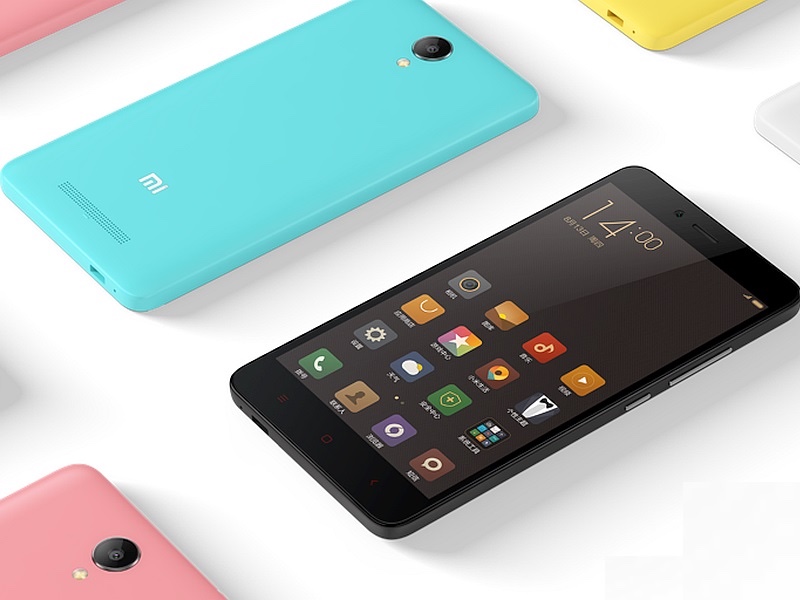- Home
- Mobiles
- Mobiles Features
- 2016 Might Be the Year That Defines Xiaomi's Fortunes
2016 Might Be the Year That Defines Xiaomi's Fortunes

When Xiaomi first launched, the company set itself apart from rest of the smartphone market with several tactics such as online only sales, zero commercial marketing, a dedicated Mi forum, and more. However, as time has passed by, these tactics have either been copied by other smartphone manufacturers, or they have not been entirely successful. As things stand, 2015 was a bad year for Xiaomi. The company first had to reduce its sales targets and then failed to achieve the revised targets.
Its home market, China, remains the biggest market for Xiaomi. It has been the top smartphone vendor in China for several quarters now. However the same Chinese market is now becoming increasingly saturated, as shown by this infographic from IDC.
The slowdown in growth is further proved by the fact that practically every Chinese smartphone manufacturer has started entering India in search of growth and newer markets; LeEco, Qiku, Zopo, and Meizu all have entered India recently,even though the volume of the Indian smartphone market is a fraction of China's.
China is saturated
The saturation means that Chinese users have already had their first experience of smartphones. The proliferation of apps such as WeChat and the various services on WeChat have made the smartphone an indispensable and invaluable investment for Chinese users. And when these first-time Chinese users upgrade they tend to prefer higher-end smartphones. This is a crucial reason why iPhone has taken the Chinese smartphone market by storm and Huawei has also done well at selling its high-end smartphones in China, as characterised by the rise in its average selling price along with shipments growth. Other premium smartphone vendors like Oppo are also doing quite well.
As of now Huawei, Apple, and Xiaomi are almost neck to neck in China but while Apple and Huawei have grown on the back of premium smartphone sales, a large part of Xiaomi's smartphone sales have come from the low-end Redmi series and this was underlined by the drop in the ASP of Xiaomi's smartphones in 2015, when compared to 2014.
There are however, two important caveats here. Xiaomi didn't release a flagship in 2015 aside from the Xiaomi Mi Note Pro, which could have contributed to its lower ASP as compared to 2014. Also, if the market is shifting to higher-end smartphones, that doesn't explain Samsung's constantly tanking position in the Chinese smartphone market - Samsung isn't even amongst the top five smartphone manufacturers in a market it once used to rule, despite the Samsung Galaxy S6 and Galaxy Note 5 being two the best Android smartphones in 2015.
However, there is no doubt that Xiaomi's ability to position itself as a premium brand is nowhere near what Apple possesses. This will be a problem in a market where there's a rising middle class and smartphones are arguably more integral to people's daily lives as compared to any other country. When people upgrade, which is where the vast majority of new smartphone sales is going to come in a saturated market, from Xiaomi will be at a disadvantage.
Quick replication of Xiaomi's model
Xiaomi's business model has been quickly replicated by several of its competitors, taking away its uniqueness. Its advantage used to be not having to spend money on marketing, while online-only sales and fewer device launches that helped it save money. Apart from that, Xiaomi also had its rather active online forum, and promised to deliver upgrades swiftly based on community feedback. However, all of these has been copied by several established manufacturers either directly, or in the form of subsidiaries.
In India, for example, Micromax spun out a subsidiary called Yu that was positioned to directly against (Xiao)Mi. Just like Mi, even Yu has an online forum where people can interact with each other. Yu also has limited models covering the price range they are launched in. For example, Yuphoria, Yureka and Yutopia have very distinct prices covering the low, mid and high-end respectively, just like Xiaomi's Redmi, Redmi Note and Mi series. Yu is an online only brand and just like Mi, even Yu has promised to deliver upgrades swiftly thanks to its partnership with Cyanogen.
Despite Micromax's Yu making its debut after quite some time Xiaomi had launched in India, the brand managed to overtake Xiaomi in Q3 2015, as reported by research firm Counterpoint.
Not just Micromax, but even Huawei's Honor brand has 'learned' a lot from Xiaomi, and it has seen good success in Europe. At the same time, Xiaomi itself has had to make use of more conventional techniques. The company has ventured into offline retail in India by partnering with The Mobile Store, and Redington. The company is also reportedly looking to open its dedicated stores in India.
These points are of course, highly India-specific, because outside of China, India is the second largest smartphone market for Xiaomi. Even over here, competition has largely caught up to Xiaomi and to make things worse it was recently reported that Apple managed to surpass Xiaomi's market share in 30 cities of India despite the fact that Apple doesn't even rank amongst the top five smartphone manufacturers in India.
A platform, not a phone
Xiaomi has said that it wants to use its smartphone as a platform, and use that to distribute content and services from which it will make most of its profits. However, selling services and content is highly dependent on the price of the devices. It follows logically that a device, which has a higher price, also has a higher chance of being able to sell services and content to its users, than a device that sells for a low price.
The image above compares the ASP of iPhone, Android smartphones, and Xiaomi smartphones. It's clear that Xiaomi commands the lowest ASP and iPhones command the highest ASP. This means the vast majority of shipments are of the low-end devices for Xiaomi, and thus the ability of Xiaomi to be able to sell its users content and services would also be lower. To further illustrate the connection between ASPs and content and services take a look at the chart below where revenue for iOS's App Store exceeds that of Android's Google Play despite the fact that the latter has more overall downloads. Connecting the dots, it suggests there's a correlation between the ASP and the propensity of users to jump on apps and other services.
For example, developers of IA writer, a popular writing app that's available on iOS, Android, and Mac, recently published a post saying that despite having a similar quality product on both platforms, revenue from Android was a lot lower than on iOS.
Despite having low-end smartphones in its portfolio, Xiaomi plans to sell content and services to its users, but if the Android vs. iOS comparison is any indication, it's clear that the ASP of a smartphone matters a lot when it comes to selling services and content.
No stickiness
In India, another problem could be that the company is not able to lock users inside its ecosystem. The primary reason why people have told us they buy Xiaomi smartphones in India is because of the value proposition. If the value proposition is removed, then people will quite comfortably dump Xiaomi and move on to any manufacturer which provides better value proposition.
Even if someone does like Xiaomi products, there is no particular lock in. For example, if you like MIUI there is no reason for you to buy a Xiaomi smartphone, since MIUI ports are available for several other smartphones on xda. Similarly, just because I buy a Xiaomi smartphone doesn't necessarily mean you need to stick with MIUI as you can very well load up Cyanogen or AOSP on it if the build exists on xda. If you feel the Mi Band is a good device, you can buy it without having a Xiaomi smartphone or MIUI, as the companion app runs on pretty much any Android device. Sure, MIUI might have deeper integrations but the core functionality is available everywhere regardless of the device or platform used.
Compare this with Apple, where if someone wants to use an Apple Watch it is necessary to own an iPhone, and the only way to get access to iOS is again with an iPhone. iPhone, by and large, is the profit driver for Apple.
2016 a game changer?
Despite challenges, 2016 has several delights in store for Xiaomi. The company finally launched its much-awaited Mi 5, which has already received more than 17 million registrations in China, and its Redmi Note 3 has been very well received by reviewers in India. Sales will almost certainly increase this year, compared to 2015.
However, the bigger question is whether Xiaomi really can make enough profit to justify its valuation. Profit wouldn't be a necessity to justify the valuation if the company was moving on an upward trajectory, but even growth has come to screeching halt compared to 2013 and 2014. To top all this, as mentioned earlier, the company also missed its internally set target of $1 billion from content and services in 2015 by a wide margin.
Xiaomi's unique business model also comes with a unique cost. This cost is that this made a wide variety of companies their competitors. For example, by making smartphones Xiaomi is already a direct competitor to Samsung, Micromax, and others, and this is what most people think of. However by having its own online store Mi.com, Xiaomi also ends up making Alibaba or Flipkart indirect competitors. Similarly, its bid to serve content and services through its smartphone also makes Chinese giants such as Tencent, Alibaba, and Baidu indirect competitors.
Some of these competitors, such as Baidu, Alibaba, and Tencent, have far deeper pockets than Xiaomi and are aiming to have the same services and content that Xiaomi wants to sell. As Radio Free Blog had put it:
Xiaomi's rivals (Baidu, Alibaba, Tencent, and China Mobile) are all investing heavily and critically they also have the internal cash flow to pay for it. Xiaomi does not and it will be very difficult to come back to the market as this will necessitate raising money far below the 2014 valuation of $42 billion.
Xiaomi has been great at many things no doubt, but for it to turn things around in 2016, it will need to do a lot more. The company has generated hardly any profit by selling its content and services, and when you couple this with the slowdown in growth and the slowdown in VC funding, it's not difficult to see why things may get tough for Xiaomi from here on.
Catch the latest from the Consumer Electronics Show on Gadgets 360, at our CES 2026 hub.
Related Stories
- Samsung Galaxy Unpacked 2025
- ChatGPT
- Redmi Note 14 Pro+
- iPhone 16
- Apple Vision Pro
- Oneplus 12
- OnePlus Nord CE 3 Lite 5G
- iPhone 13
- Xiaomi 14 Pro
- Oppo Find N3
- Tecno Spark Go (2023)
- Realme V30
- Best Phones Under 25000
- Samsung Galaxy S24 Series
- Cryptocurrency
- iQoo 12
- Samsung Galaxy S24 Ultra
- Giottus
- Samsung Galaxy Z Flip 5
- Apple 'Scary Fast'
- Housefull 5
- GoPro Hero 12 Black Review
- Invincible Season 2
- JioGlass
- HD Ready TV
- Laptop Under 50000
- Smartwatch Under 10000
- Latest Mobile Phones
- Compare Phones
- Tecno Spark Go 3
- iQOO Z11 Turbo
- OPPO A6c
- Samsung Galaxy A07 5G
- Vivo Y500i
- OnePlus Turbo 6V
- OnePlus Turbo 6
- Itel Zeno 20 Max
- Lenovo Yoga Slim 7x (2025)
- Lenovo Yoga Slim 7a
- Lenovo Idea Tab Plus
- Realme Pad 3
- Garmin Quatix 8 Pro
- NoiseFit Pro 6R
- Haier H5E Series
- Acerpure Nitro Z Series 100-inch QLED TV
- Asus ROG Ally
- Nintendo Switch Lite
- Haier 1.6 Ton 5 Star Inverter Split AC (HSU19G-MZAID5BN-INV)
- Haier 1.6 Ton 5 Star Inverter Split AC (HSU19G-MZAIM5BN-INV)







![[Sponsored] Haier C90 OLED TV | Dolby Vision IQ, 144Hz OLED and Google TV in Action](https://www.gadgets360.com/static/mobile/images/spacer.png)









